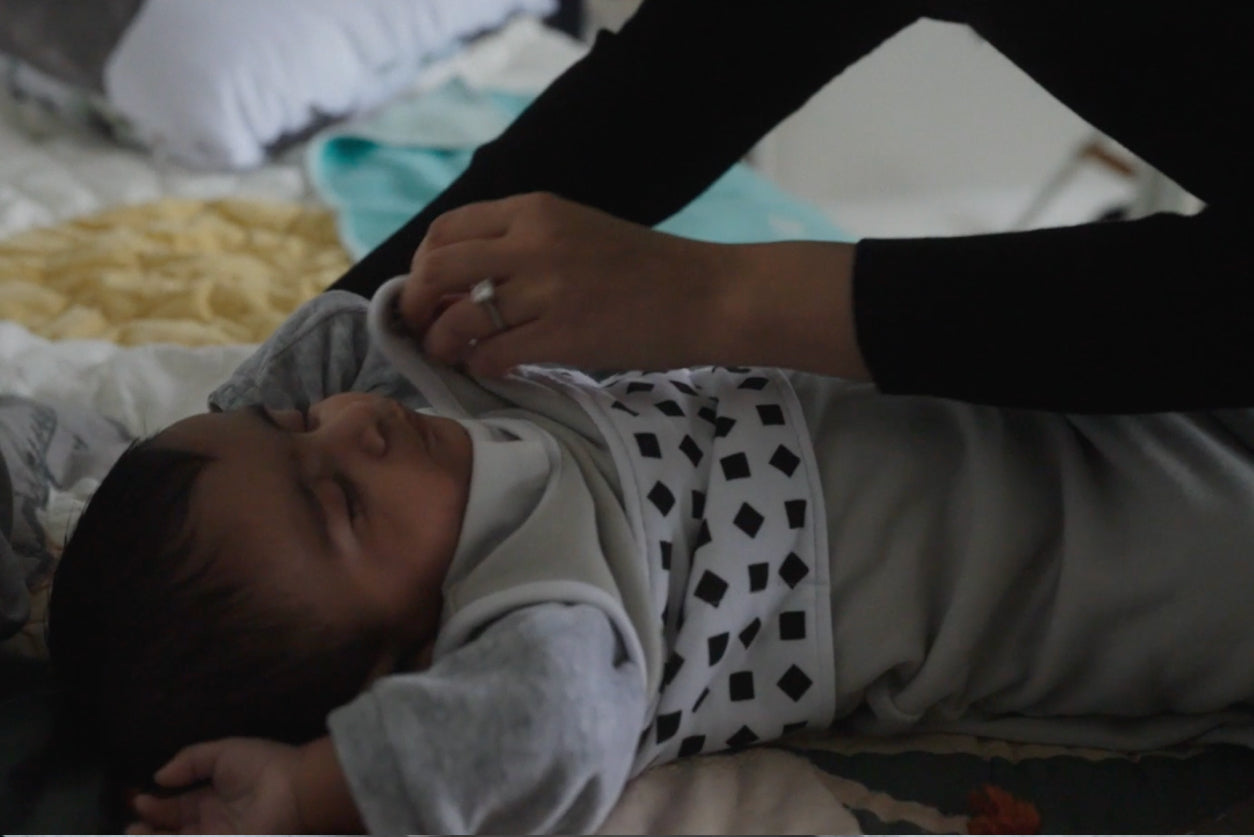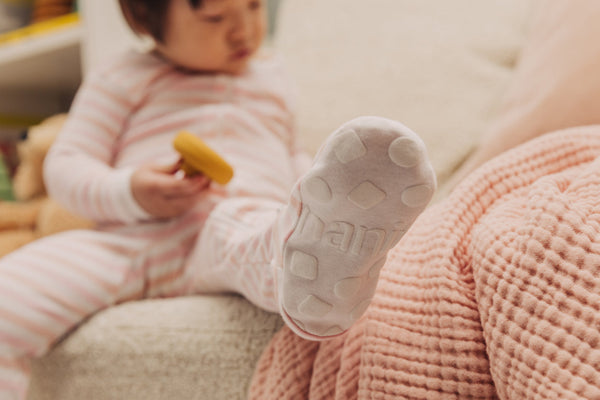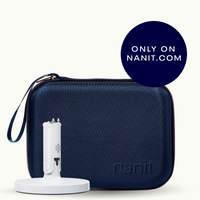Your baby is snugly swaddled. You’ve sung them lullabies and laid them into bed. But when you settle in on the living room couch and feel a chill in the room, it’s easy to wonder—Is my baby cold, too?
Just because you're feeling cold doesn’t mean your baby is as well. Luckily, there are a few simple signs to check for, plus some tips to help you keep them—and your conscience—cozy and comfortable all night long.
4 signs that baby is cold at night
Once the temperatures start to drop—and you find yourself snuggling up under extra blankets and cozy sweaters—it’s easy to assume your baby is feeling the chill, too. If only you could ask them! So, how to tell if your baby is cold at night?
Here are the signs to look for:
- Touch their skin. Gently touch your baby’s arms, legs, cheeks, chest, and back of the neck to see if they’re warm or overly cool. If your baby’s hands are cold at night, it might not signal the need for another layer. Babies often have cooler extremities, so it’s important to check their torso or back for a more accurate read, as these areas are better indicators of their core temperature.
- Look for signs of fussiness or frequent waking. If your baby is waking up more than usual, it could be because they’re feeling cold. Check their skin to confirm. If they’re not cold, there could be other reasons for their discomfort.
- Notice if their skin appears pale. If you notice your baby’s nose, lips, or fingertips looking pale or slightly blue, they may be struggling to stay warm.
- Check for shivering. If you notice shivering on the monitor or when you check on them in person, it’s definitely time to add an extra layer.
How to maintain the best sleep environment
Something that will help you rest better at night? Feeling confident that your baby’s sleep environment is consistently comfortable for them.
Two of the most important elements? a stable room temperature and an ample amount of humidity.
How a baby’s room temperature affects their sleep environment
Room temperature plays a key role in making sure your baby is snug as a bug (and not too cold)—but why? Babies don’t fully regulate their body temperature until around 11 weeks, and even after that, they rely on their sleep environment and clothing to stay warm, since they can't cover themselves up if they get chilly.
There’s no one-size-fits-all temperature, however, the recommended range is between 68 and 72 degrees Fahrenheit. While the American Academy of Pediatrics (AAP) doesn’t specify an ideal room temperature, they advise dressing babies in no more than one layer more than an adult would need for comfort in the same environment to avoid overheating. Watch for signs in your baby of overheating, such as sweating, flushed skin, or a warm chest. Avoid overbundling and do not cover the baby’s face or head indoors. Lightweight layers like sleeping bags or pajamas can help keep babies comfortable without the risk of overheating.
The role of humidity in your baby’s sleep setting
Humidity levels play a bigger role in your baby’s ideal sleep environment than you might think. In the spirit ofGoldilocks, here’s how humidity affects little one’s room:
- Too dry. If the air is too dry, especially in winter, it can lead to irritated skin, nasal passages, and a scratchy throat. This can cause your baby to wake up more often and be fussy. Low humidity can also make the room feel colder than it really is. Adding a humidifier can help restore moisture to the air, keeping your baby comfortable and easing their breathing.
- Too moist. On the flip side, too much humidity can create an environment where mold and allergens thrive, affecting the air quality and posing health risks for your baby. A room with excess moisture and heat can also feel clammy, which might make your baby too warm or uncomfortable. A dehumidifier can help balance the air, preventing dampness and discomfort.
- Just right. The sweet spot for your baby’s room is around 40 to 60 percent humidity. With the Nanit Pro Baby Monitor and the Insights Plan, you can easily monitor both temperature and humidity levels to ensure the environment is ideal for your baby’s sleep. Nanit’s built-in sensors track these factors in real-time, and if the room becomes too hot, too cold, or the humidity drifts outside the optimal range, you’ll receive instant notifications on your phone.
By keeping an eye on these levels, you can ensure your baby’s sleep environment is perfectly balanced, giving you peace of mind—and helping your baby sleep soundly all night long. If adjustments are needed, you’ll know right away and can make changes to keep their room comfortable.
How to dress your baby for sleep: Nanit Sleep Wear and Breathing Wear
According to the AAP, it’s safer for your little one if you set the thermostat to a cooler temperature (rather than one that’s too warm). And if you realize your baby is too cold at night, you can always add a layer.
But what should they be wearing to keep them warm at night?
There are a few options:
- Bodysuit. Breathable and lightweight, bodysuits are perfect as a base layer without adding too much bulk. On colder nights, pair a bodysuit with a swaddle or sleeping bag to help your baby stay cozy.
- Footed pajamas. For chilly winter nights (or any night), footed pajamas are many parents’ go-to. Babies tend to feel the cold in their extremities first, so keeping their feet covered with an extra layer can help them stay warm. Nanit’s pajamas are made from 100 percent organic cotton and feature a handy two-way zipper (so much easier for middle-of-the-night diaper changes).
- Swaddle. During the newborn stage, a swaddle is your best friend. Not only will it keep your baby warm, but its cocoon-like atmosphere is soothing and staves off any startle reflexes that could wake them during the night. Nanit’s swaddle also comes with a convenient double zipper, making late-night adjustments a breeze.
- Sleeping bag. Once your baby starts rolling over, it’s time to transition from swaddling to a sleeping bag. A sleeping bag offers a safe alternative to loose blankets, providing warmth without restricting movement. It’s also designed with a convenient two-way zipper for easy nighttime diaper changes.
For those extra chilly nights, our quilted sleeping bag offers 2.5 TOGs. Thermal overall grade, or TOG, refers to how warm a piece of clothing will keep your little one. While lower TOGs are ideal for warm weather, high TOGs, like our quilted sleeping bags, are perfect for winter nights when temperatures are between 60 to 70 degrees. Designed to be layered over pajamas and bodysuits, this cozy option provides the warmth your baby needs on colder nights.
Tips to create the ultimate cozy sleep environment
These simple tips will help you establish a safe, cozy sleep space for your little one:
Layer baby’s sleepwear
If you live in Florida, your winter temperatures indoors might not be the same as someone’s in, say, Minnesota. To keep your little one at an appropriate level of warmth, layer their sleepwear according to the temperature of their sleep environment. Learning how to keep babies warm at night involves adjusting their clothing layers based on room conditions:
- Warm rooms. In rooms with temperatures above 72 degrees, a bodysuit or lightweight footed pajamas will keep your little one cool and comfortable. Pair PJs with Nanit’s Breathing Band, and you’ll be able to seamlessly track their breathing motion while also keeping them comfortable.
- Moderate rooms. If you’re keeping the temperature between the recommended 68 and 72 degrees, opt for a pair of footed pajamas and a light sleep sack with a lower TOG rating for optimal comfort.
- Colder rooms. For chilly rooms below 70 degrees, consider layering Nanit’s 2.5 TOG quilted sleeping bag on top of your baby’s pajamas for extra warmth. It provides ample room for tiny legs to wiggle while remaining breathable enough to prevent overheating.
Monitor with Nanit’s advanced features
The Nanit Pro Baby Monitor not only gives you better peace of mind knowing your little one is sleeping soundly, but it also features real-time temperature and humidity sensors to check in on the room’s conditions.
You won’t have to worry about What happens if my baby is too cold at night? With Nanit, you’ll always know if the room is too hot, cold, dry, or humid. You can even receive a notification if the conditions fall outside the normal range, so adjusting your baby’s comfort is as simple as adjusting the thermostat or adding or removing a layer.
Prepare for warm and cozy nights with Nanit
Worrying about your little one being too hot or cold is a thing of the past. Nanit gives you the confidence that their sleep environment is just right. And if it’s not, you’ll know exactly how to create the ultimate cozy setting.
With the Nanit Pro Baby Monitor and Insights Sleep Plan, you gain instant access to other important information, including sleep analytics, smart notifications, growth tracking, and so much more.
Key takeaways
- Check your baby for signs of cold. Regularly monitor your baby for signs like cool skin, shivering, fussiness, or pale skin, which can indicate that they’re too cold.
- Maintain an ideal sleep environment. Keep your baby's room temperature between 68 and 72 degrees Fahrenheit and humidity around 40 to 60 percent and layer appropriately.
- Utilize Nanit’s monitoring features. The Nanit Pro Baby Monitor can track temperature and humidity levels in real time.
Sources:
Web MD. What's the Right Room Temperature for a Baby? https://www.webmd.com/baby/what-is-the-right-room-temperature-for-a-baby
Sleep Foundation. What Is the Best Room Temperature for a Sleeping Baby? https://www.sleepfoundation.org/baby-sleep/best-room-temperature-for-sleeping-baby
AAP. Safe Sleep and Your Baby: How Parents Can Reduce the Risk of SIDS and Suffocation. https://publications.aap.org/patiented/article/doi/10.1542/peo_document088/79989/Safe-Sleep-and-Your-Baby-How-Parents-Can-Reduce
Nanit. Nanit App Dashboard and Advanced Analytics. https://support.nanit.com/hc/en-us/articles/11634166144151-Nanit-App-Dashboard-and-Advanced-Analytics








































